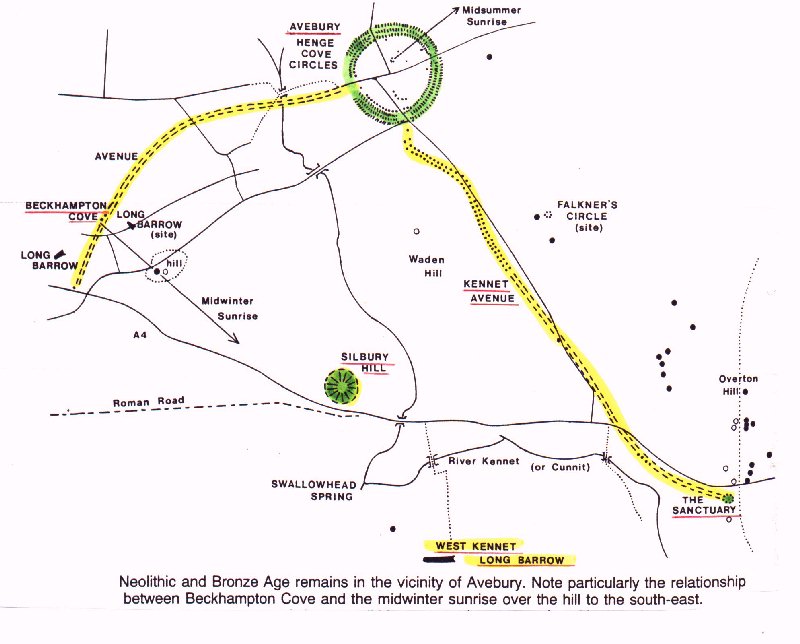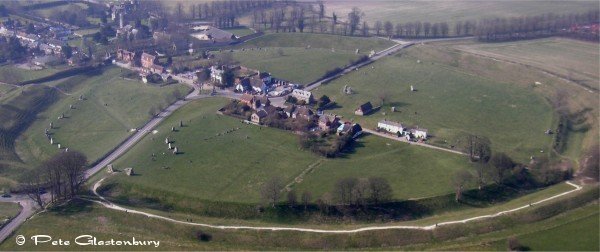

WHERE? Avebury is in Wessex,
40 km (24 miles) north of Stonehenge in central-southern England on the chalk-land
of Wiltshire (at National Grid Reference SU 101700). This World Heritage site comprises an enormous
circular earthwork, 400 m wide, with deep external ditch whose circumference
is over 1200 metres. Inside is a 400-metre diameter circle of immense
standing stones, and inside that there are two more stone circles each 100
metres in diameter. Additional placed stones increase the complexity
and world-wide appeal of this complex monument. From Avebury there run two
stone avenues, each of which had about 100 megaliths. Altogether there were
some 600 megaliths including those of the Sanctuary.
WHENCE came the stones? They were
brought from the Avebury Hills 2 to 3 km east of the monument.
WHAT SORT OF STONES ARE THEY? They
are sarsens from Eocene sandstone beds 26-million years old.
WHAT DOES SARSEN MEAN? In the Wiltshire
dialect the stones are known as sazzens or sassens, which is the same
pronunciation as in Hindu India where it is their name (via Sanskrit) for
their prehistoric stones. The origin of sassen may therefore
date from pre-Indo-European times, i.e. the Megalithic Era. In India
such megaliths are traditionally associated in belief and ritual with Mahadevi,
the Great (Maha) Goddess (Devi).
WHEN ? Avebury's first stones were
being assembled from about 2800 BCE, and all the stone circles, stone avenues
and earthworks went up during the ensuing 5 centuries.
HOW ? The stones were dragged from
the combes in the hills above Avebury using a combination of man-power, oxen
and gravity.
WHAT WAS THE MASTER BUILDING PLAN?
Inside the great circle two stone circles were created which seem to have
been temples. They both had additional stones positioned as central
settings. The North Circle is centred by a Cove whose axis is aligned
on the midsummer sunrise. The South Circle was centred by a high phallic
stone -- The Obelisk -- one of whose functions was, it is argued, to identify
by shadow-casting the chief festival dates of the Neolithic agricultural
calendar. The Obelisk was destroyed soon after 1725; a short concrete
replacement today marks the spot.
WHO WERE THESE PEOPLE? They
were the Ancient Britons who, like the Stonehenge people, were part of an
early flowering of a truly British culture. Begun in the agricultural
Neolithic Age, Avebury was completed in the Early Bronze Age by a community
(the so-called Beaker Folk) noted for setting drinking vessels (beakers)
in the graves with their dead.
Plan of Avebury (marked green) and its two avenues (marked yellow)


To see some of Avebury's outstanding,
carved heads and faces CLICK HERE
